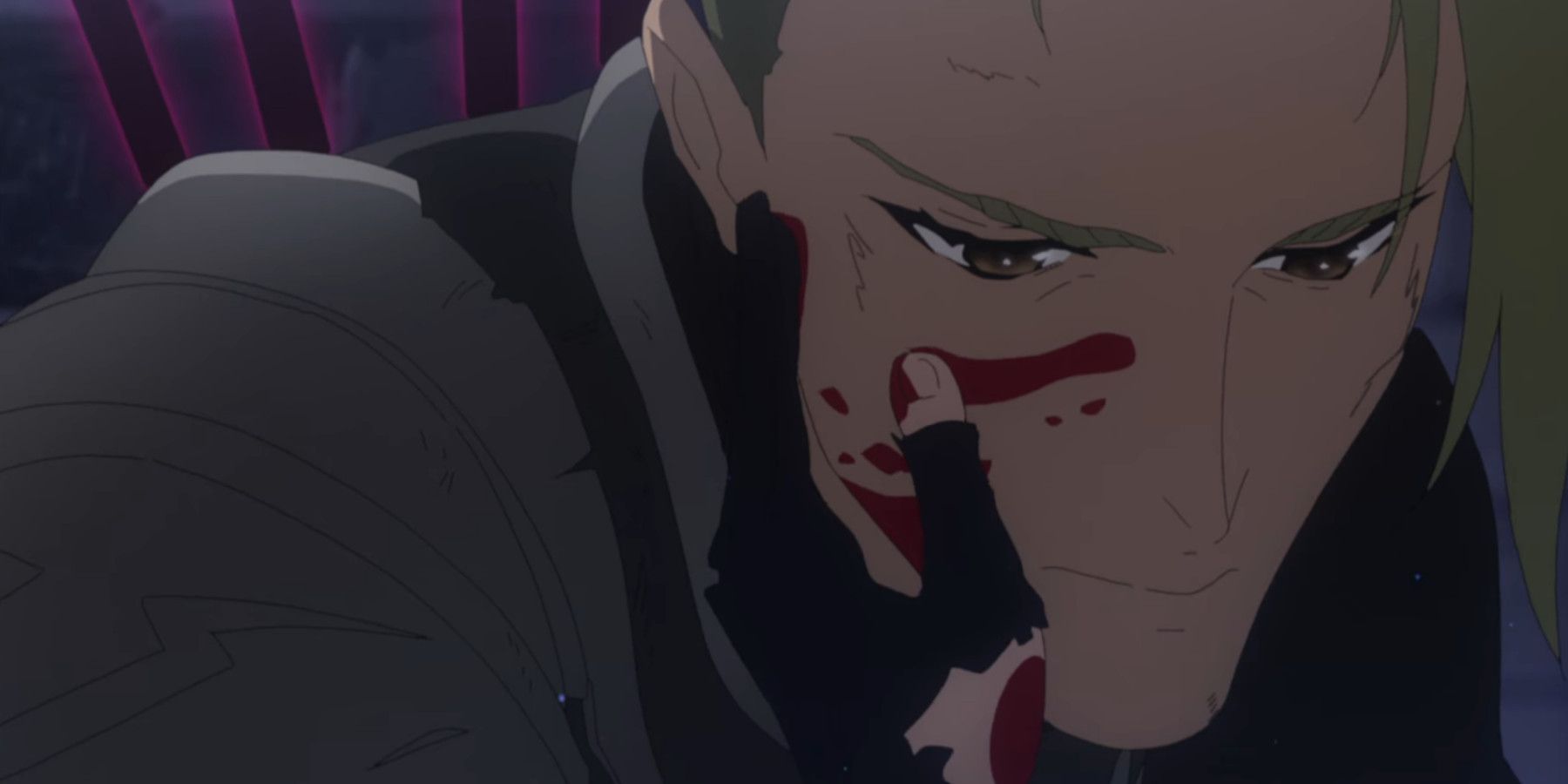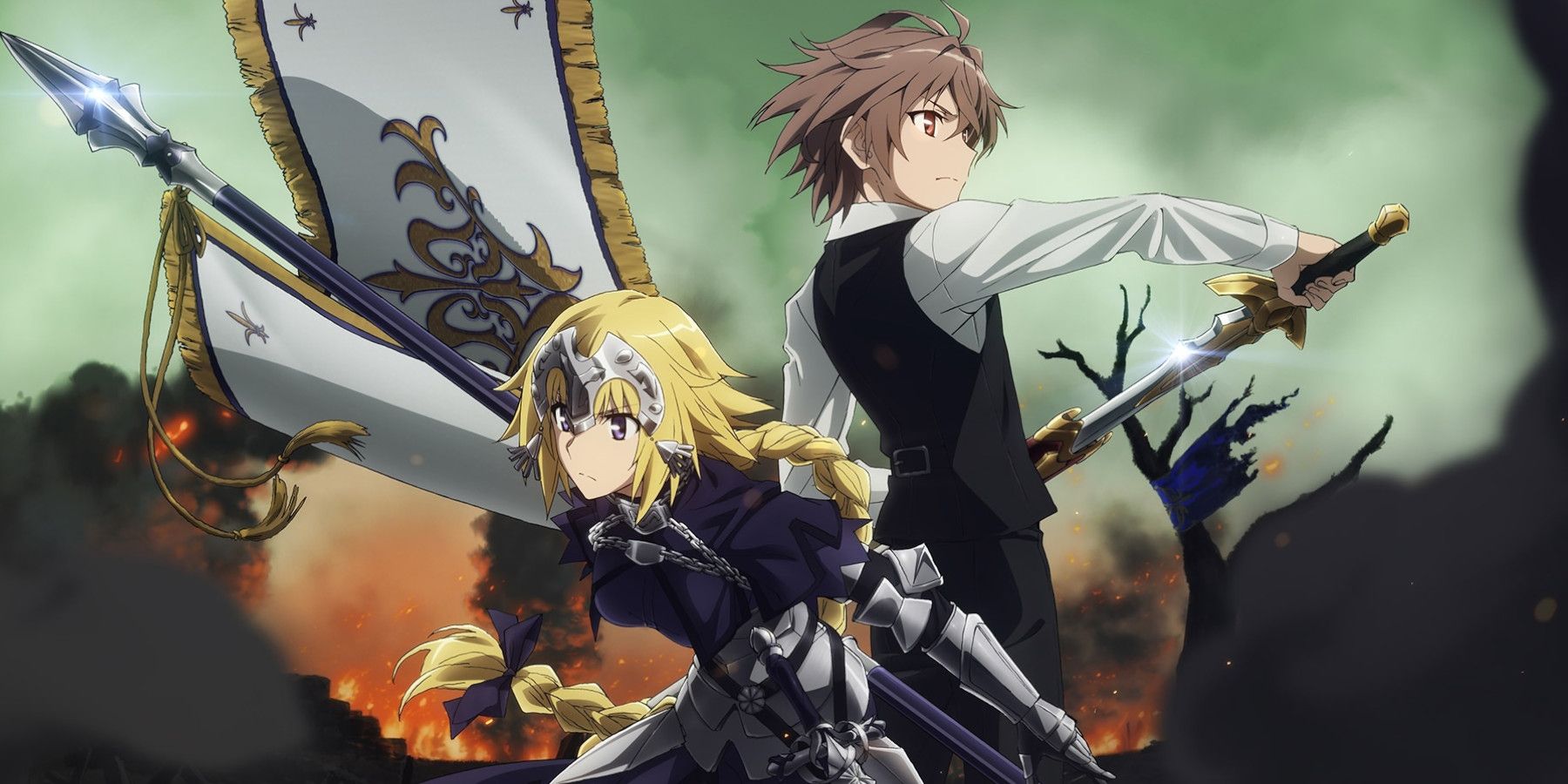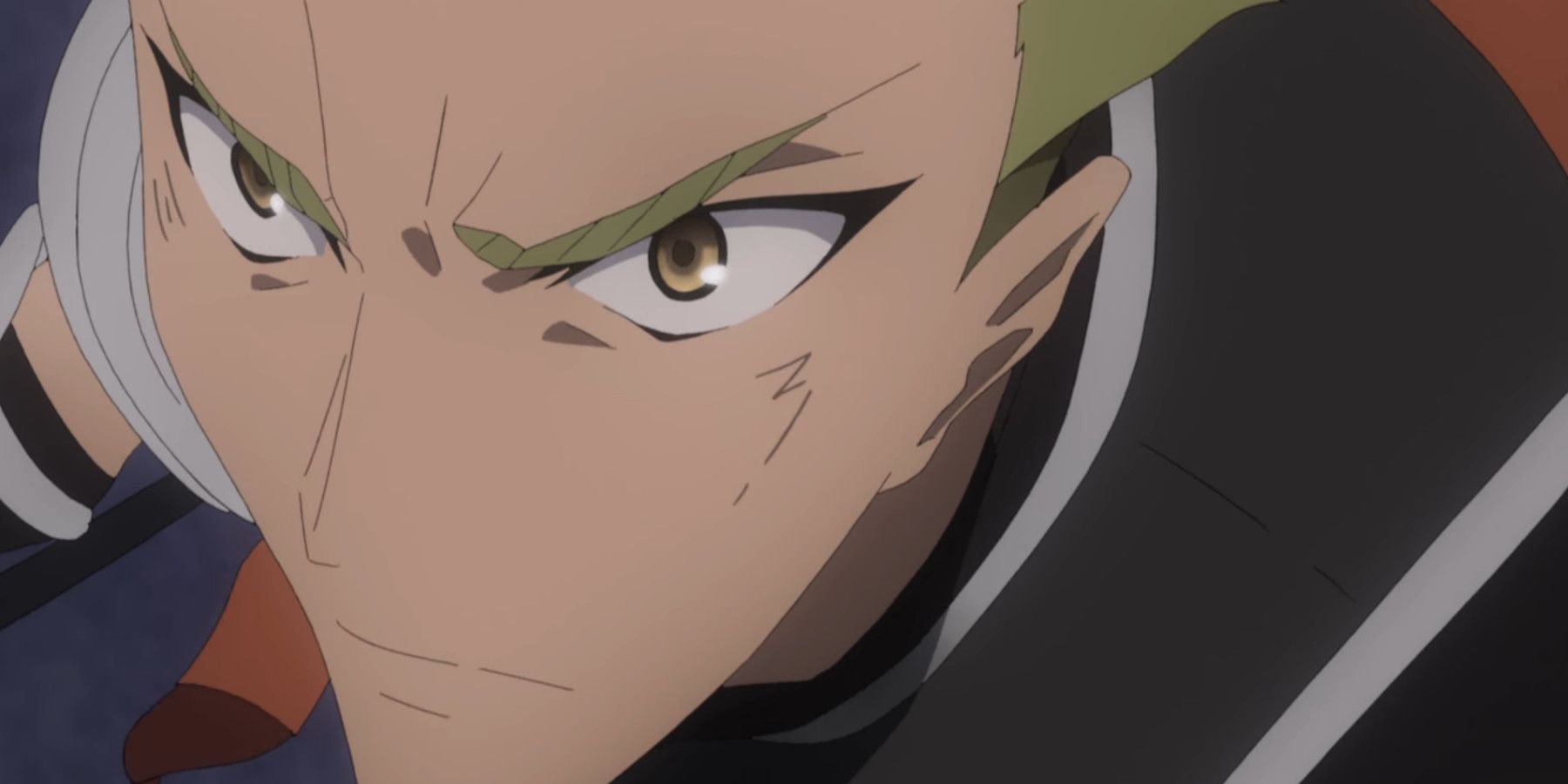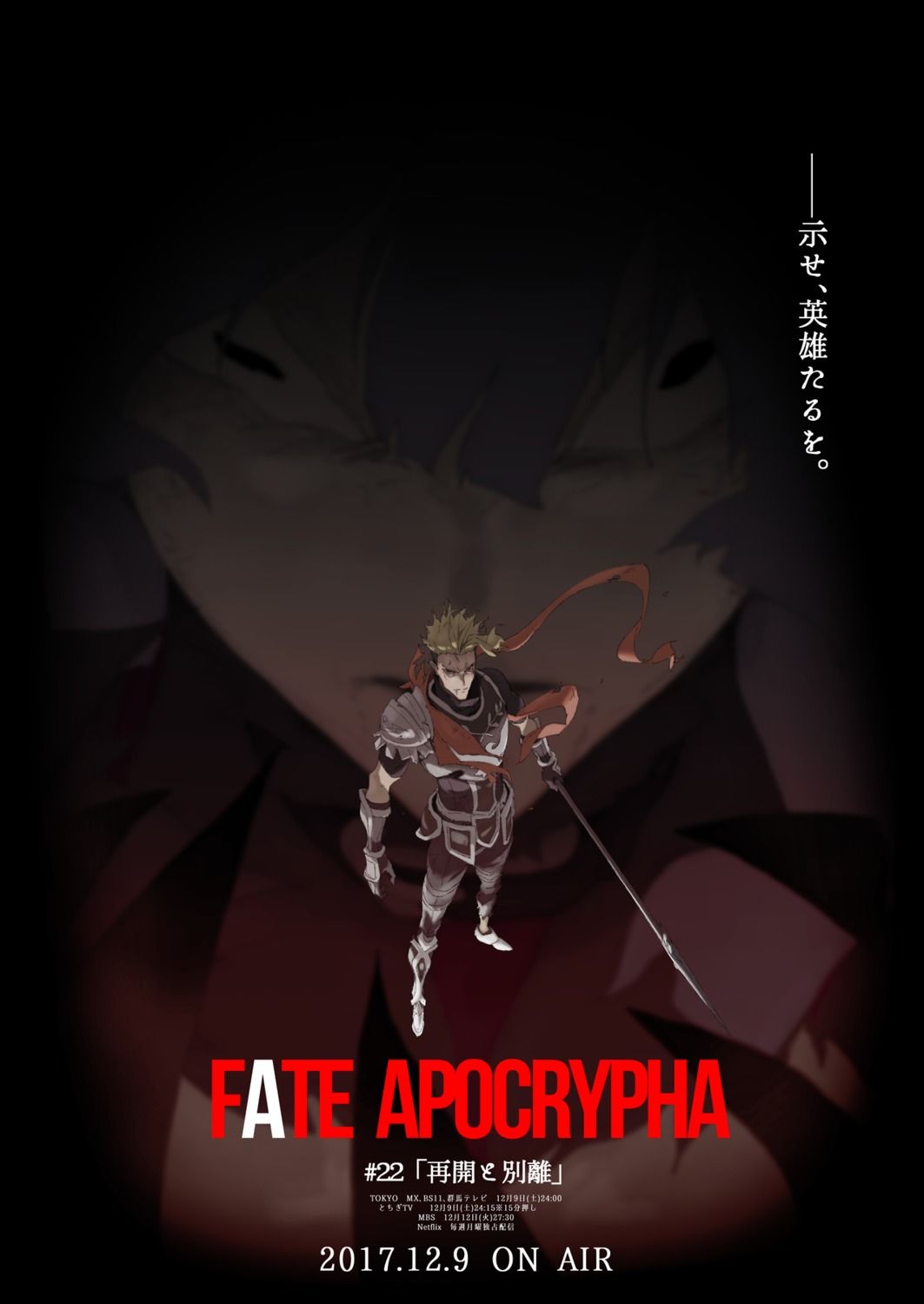Spoilers for Fate/Apocrypha ahead
It's often slept on how important "Episode Directors" are, and when a particularly talented fellow takes the mantle of an episode, the result can sometimes dwarf the quality of the rest of the series. Fate/Apocrypha might not be the most beloved of the Fate entries, but when its 22nd episode aired, it shook the community to its core and got quite a bit of attention.
Storyboard Artist, Episode Director, and Animation Director (AD), Hakuyu Go helmed this episode close to the end of Apocrypha's 25-episode run with Yurie Hama and Rio, who also served as ADs. Over this 24-minute episode, aired on December 9, 2017, the animation never seemed to slow down or regress to some state of normalcy, opting to burn brightly until the tank was empty.
The Story
Episode 22 doesn't so much mark the beginning of the climax, so much as it is the beginning of said climax's descent into madness never before ventured by the series up to that point. When we join the characters, Jaune D'Arc, Sieg, and the rest of the heroes - a smattering of remaining masters and servants - have launched an assault on the antagonists.
The villain, Amakusa Shirou Tokisada, and the remaining Servants of Black, are preparing to use the Holy Grail in their floating fortress, the Hanging Gardens. Jaune D'Arc and Achilles are defending two planes being flown in with the allied Masters and have already come head to head with Servants Chiron and Atalanta.
When the episode begins, Atalanta, still enraged at Jaune for her past actions, undergoes a transformation into a feral beast and attacks her. She must hold out until Achilles arrives, who has defeated Chiron but chooses to fight Atalanta to stop her now that she has fallen to madness. Meanwhile, Sieg has transformed into Siegfried and battles Karna, one of the most powerful Servants in Fate lore.
The Animation
Nowadays, when people think of frame rate or literally the number of frames per second, there is an idea that more is better, as it produces a smoother image. However, animation as a conveyance of motion can often be aided by fewer frames. Consider the work of Tetsuya Takeuchi, an animator famous for directing and sometimes animating entire episodes. His work could possibly be called choppy, but the individual key frames are full of incredibly expressive and lifelike movement that conveys a lot of emotion. The resulting animation can feel somewhat surreal as a result. This is important in understanding what makes the style of animation dominating episode 22 so attractive.
Within seconds, the shaking perspective, the canted angles, and the off-kilter movements of the possessed and vicious Atalanta dominate the scene. Jaune is but prey attempting to survive an onslaught of ranged attacks from an animalistic hunter. When Jaune skewers Atalanta's monstrous wing, the mad servant rips her own wing and creepily stumbles towards an unsettled Jaune. While the three-way battle between Atalanta, Jaune, and Achilles carries a looming sense of dread, the other battle of the episode feels heroic, epic, and final. Siegfried vs Karna might be one of the grandest battles in Fate history. The contentious power-scaling alone has stirred many a familiar debate about how Siegfried could even hope to stand a chance.
In this way, it echoes similar complaints from Fate/Stay Night about Shirou vs Gilgamesh, and similar to that fight, Apocrypha's battle is awesome; broken scaling be damned. It is by this episode that the music by Masaru Yokoyama has fully proven itself as some of the best in the franchise, up there with Yuki Kajiura's score for Fate/Zero. Both combatants unleash blast after almighty blast, decimating the ground beneath their feet and creating smoldering craters from the intensity of their energy. It's a light show color-coded to display each player's attacks, and while such displays of attrition can become played out or feel meaningless, the music and performances carry the load just as much.
Clothing and hair flutter in the wind as they compliment each other's strength and the ground melts into a burning pool of gorgeously animated lava. Siegfried's face contorts as they squeeze what strength they can into countering an ungodly amount of power that the sound design of the show screams to life with plentiful bass-boosting. Not to mention, the storytelling and how Astolfo's last-second interjection changes the game is glorious, taking the episode from one style to the next as the animation team throws everything it has at the viewer. And after a glorious duel, the episode ends tragically, returning to Achilles and Atalanta, holding one another as they have both ended the other.
Feeling Out of Place
It's easy to feel a swell of excitement watching the episode and reveling in what SakugaBlog rightfully called "the best-animated episode of anime in 2017." However, the more time passes since the episode came out, the more that its beauty, however transfixing, becomes a little more worthy of criticism.
For one thing, it has a roughness to it that doesn't quite excuse itself easily and at first, the change of pace is so unexpected that it's an utter delight. But not all of its roughness can be excused simply because the whole episode is such a statement by its artists. Things like the shadows or the line art could be defended because they are arguably artistic choices, but things like the directing or even the setting are harder to defend.
Put simply, the transitions between these battles can be jarring and lacking in cohesion and the settings of these scenes feel incredibly out of place. Rarely are the establishing shots not contradicted by where the characters are seen in the next scenes. The battles presumably take place in The Hanging Gardens, but the scale of the battles makes it seem as if the entire Garden should fall from the sky by the end.
The start of the episode is a repeat of the end of episode 21 but animated completely differently. The episode feels as though it was built separately from the rest of the series, with not nearly enough correction done by the series director to cohesively bridge it with the main show. Its construction is so elaborate that it's almost tempting to say the rest of the show was built around #22.
A Verdict, or Rather, A Question
Fate/Apocrypha's 22nd episode is a lot to take in. It is a tour de force of expressive and exciting animation focused on emotion over adhering to convention. It is also an imperfect piece of work, the expression of which is so distinct that it begs one to wonder if it even elevates the art it is a part of or merely co-opts it for the sake of doing something neat.
It's clear that people in the industry were excited about it. There were tweets about the staff gathering to eat pizza and watch it air live and Nakaya Onsen even made a poster of all things just for the occasion, as if it were something in theaters; as if it were an event in itself. With such heartwarming hype among the creators, is fretting over the flaws really necessary?
"Is it good?" is an extremely difficult question to answer because it depends on how one qualifies good or bad animation at the end of the day. And "at the end of the day" is the operative phrase. When all is said and done, did this episode deliver on something exciting and tell a good story while doing it? If so, then perhaps a little roughness is worth it.
Source: Disgaeamad/Sakuga Blog




